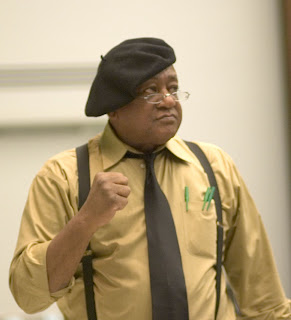Sleep Study in African-Americans seeks connections to heart disease, stroke
JACKSON, Miss. – A sleep study by University of Mississippi Medical Center researchers beginning next week in up to 1,200 African-Americans promises to deepen knowledge about how sleep disorders may contribute to cardiovascular and other diseases.
It could also connect ancient Hindu philosophy on stages of sleep with modern physiology.
At seven to eight hours a day, sleep is a major activity of daily life. The average person sleeps 2,500 to 2,900 hours a year. In an average 79-year lifetime, that’s as many as 26 years.
“We never think about it. We go to bed, every day we get up and we don’t think about those 26 years,” said Dr. Tandaw Samdarshi, associate professor of cardiology and principal investigator of the study. “With this study, we will see what the effects of sleep are.”
 | This summer, Samdarshi received a four-year, $3.8 million grant from the National Heart, Lung and Blood Institute to fund the study. His team completed a pilot study in 2010, making way for this larger investigation titled Sleep Disordered Breathing and Risk for Cardiovascular Disease and Stroke in the Jackson Heart Study.
At-home recordings taken by study participants will show researchers the quality and quantity of the individual’s sleep. Samdarshi and his team also plan to study how physical activity and environmental factors such as noise, pollution and temperature affect sleep. He plans to start gathering data from the first participants next week. |
Ultimately, the team hopes the findings can reduce the public burden of heart disease, stroke and other chronic conditions. And perhaps identify how to get more from the years spent asleep.
Looking into ancient knowledge of sleep’s health benefits, Samdarshi points to the Upanishads, ancient Indian texts. They contain descriptions of sleep in four stages of consciousness: jagrata, or waking consciousness; svapna, or dreaming; deep sleep known as susupti; and turiya, an experience of pure consciousness.
“You are supposed to strive for that last stage,” Samdarshi said. “You must have a strong will and meditate. This is where you can connect with the higher power.”
Modern medicine is able to link the increased risk for diseases, such as hypertension, cancer, depression and diabetes, to problems with sleep. Thanks to the understanding of sleep disorders as a public health issue in recent years, the Centers for Disease Control and Prevention increased its surveillance of sleep-related behaviors.
The Institute of Medicine of the National Academies, an independent non-profit organization, reports 50-70 million U.S. adults have some sleep or wakefulness disorder. Alcohol, fatigue, stress and other factors can contribute to lack of sleep, as can the round-the-clock nature of technology.
“So we want to ask, what physiological changes happen when you are sleep deprived? We know your cortisol levels go up, your blood ghrelin levels go up, and we know that REM sleep burns more energy, about 300 calories a night,” Samdarshi said. The hormone ghrelin increases appetite and is secreted by the stomach and pancreas.
Of the 20 JHS participants in the 2010 pilot study, 17.6 percent experienced moderate sleep-disordered breathing and 65 percent showed some degree of sleep disorder.
For the main study, the researchers hope to enroll 1,200 people of all ages from the JHS cohort. Participants will fill out questionnaires and use a monitoring device at home, called an embletta, to take recordings during sleep.
“We will get almost the same amount of data, save for EEG and ocular data, that we would if we observed them in a sleep lab,” Samdarshi said.
The researchers will analyze blood samples for hemoglobin A1C, the inflammation marker Interleukin 6 and fasting glucose.
The investigation marks the largest sleep study in an African-American cohort, Samdarshi said. Dr. Herman Taylor, professor of cardiology and JHS principal investigator, said Samdarshi’s work is on the vanguard of the type of investigations the JHS aims to stimulate.
“Looking into sleep is critical,” Taylor said. “Disorders of sleep have gained a lot interest as a genesis area for many types of cardiovascular diseases. This study will help shed new light on that topic.
“We do know that a shallower nocturnal dip in blood pressure can lead to kidney dysfunction, enlargement of the heart and other problems. It’s not a leap to hypothesize that sleep and blood-pressure dipping are connected. And that poor sleep is probably a significant risk factor for cardiovascular dysfunction.”
According to Taylor, as one of several large, federally funded investigations to spin off of the JHS, the sleep study is one more example of JHS realizing its full potential and driving forward innovative research.
Media Contact: Jack Mazurak at 601-984-1970 or
jmazurak@umc.edu.



















